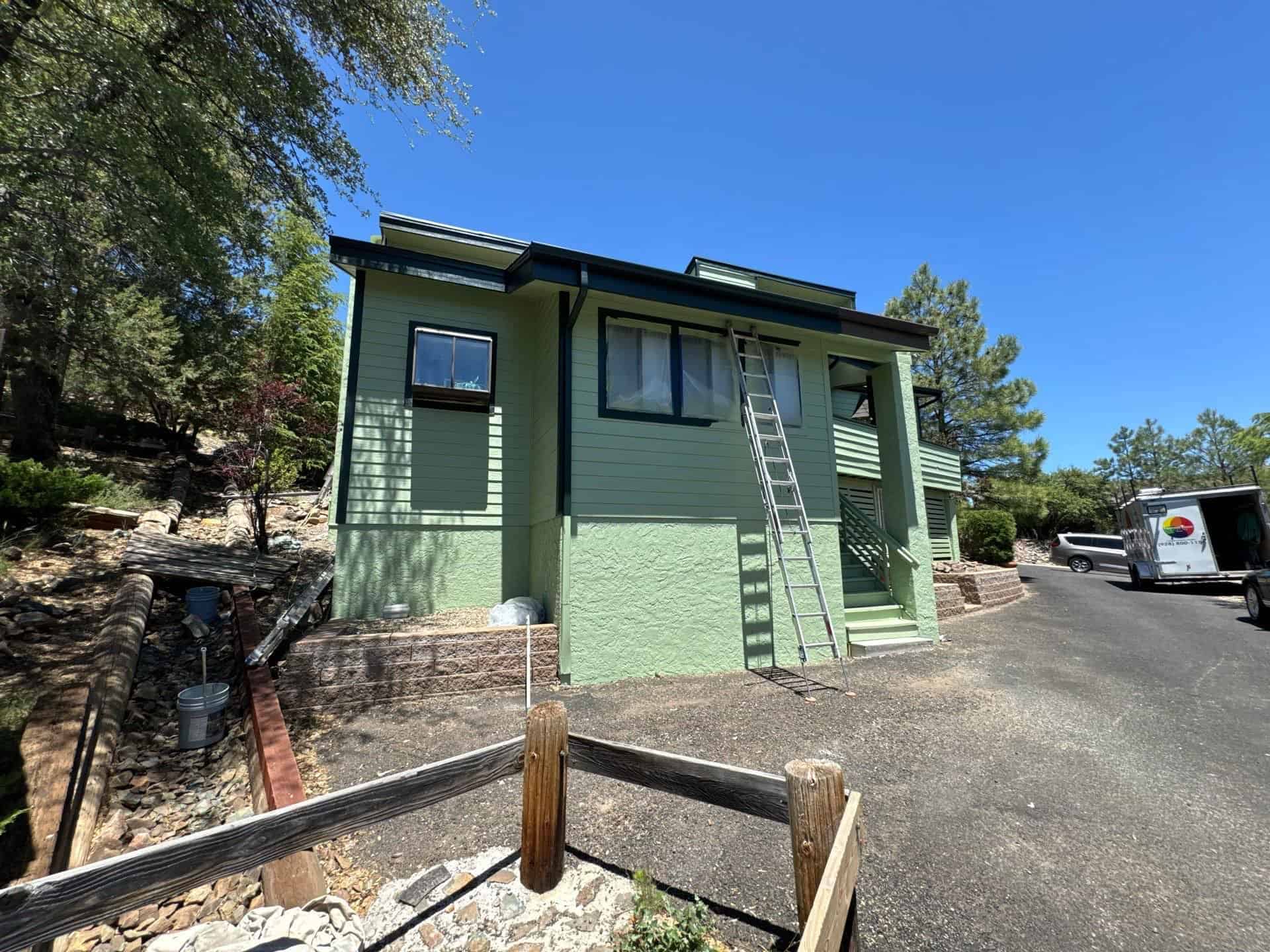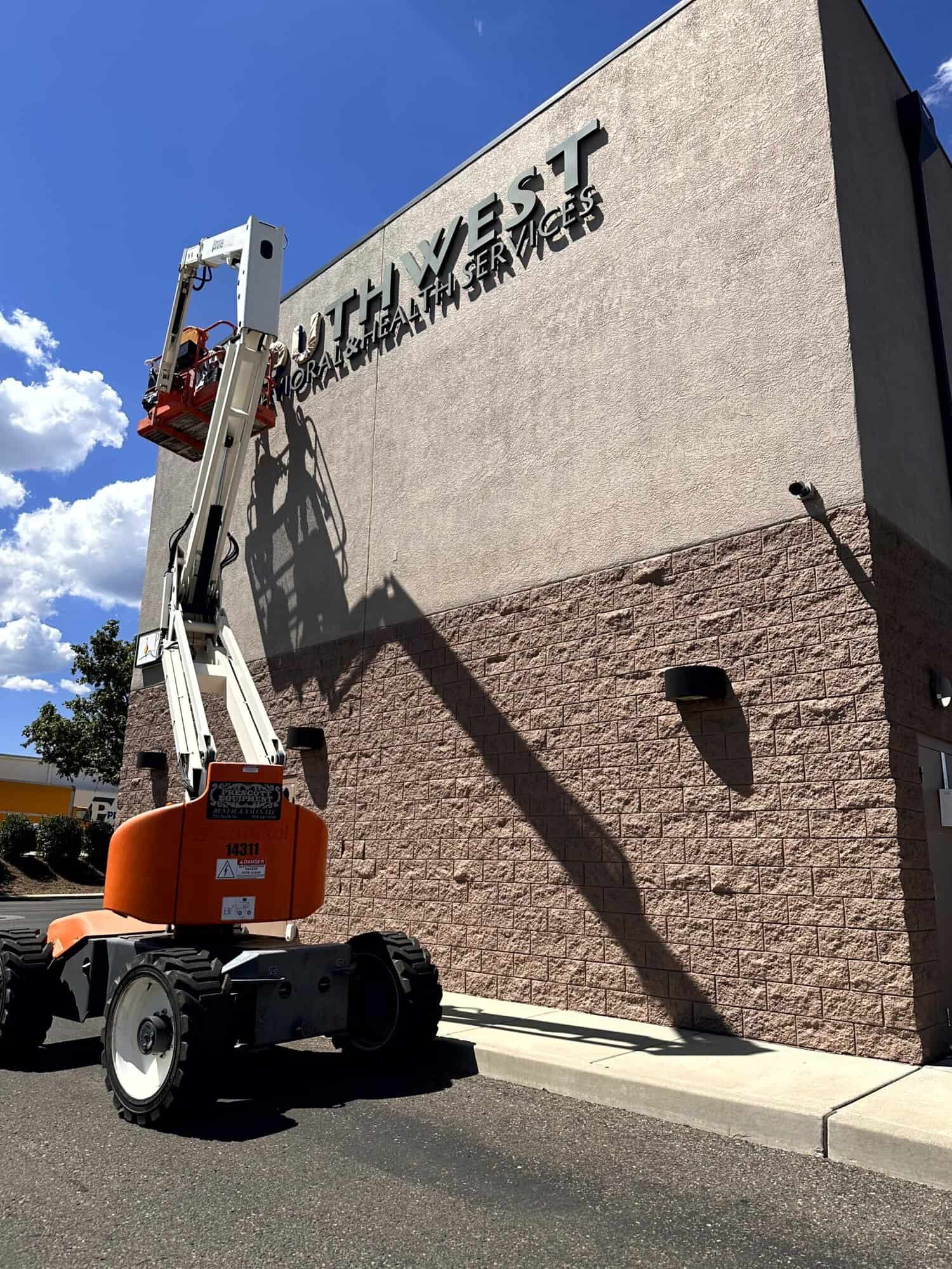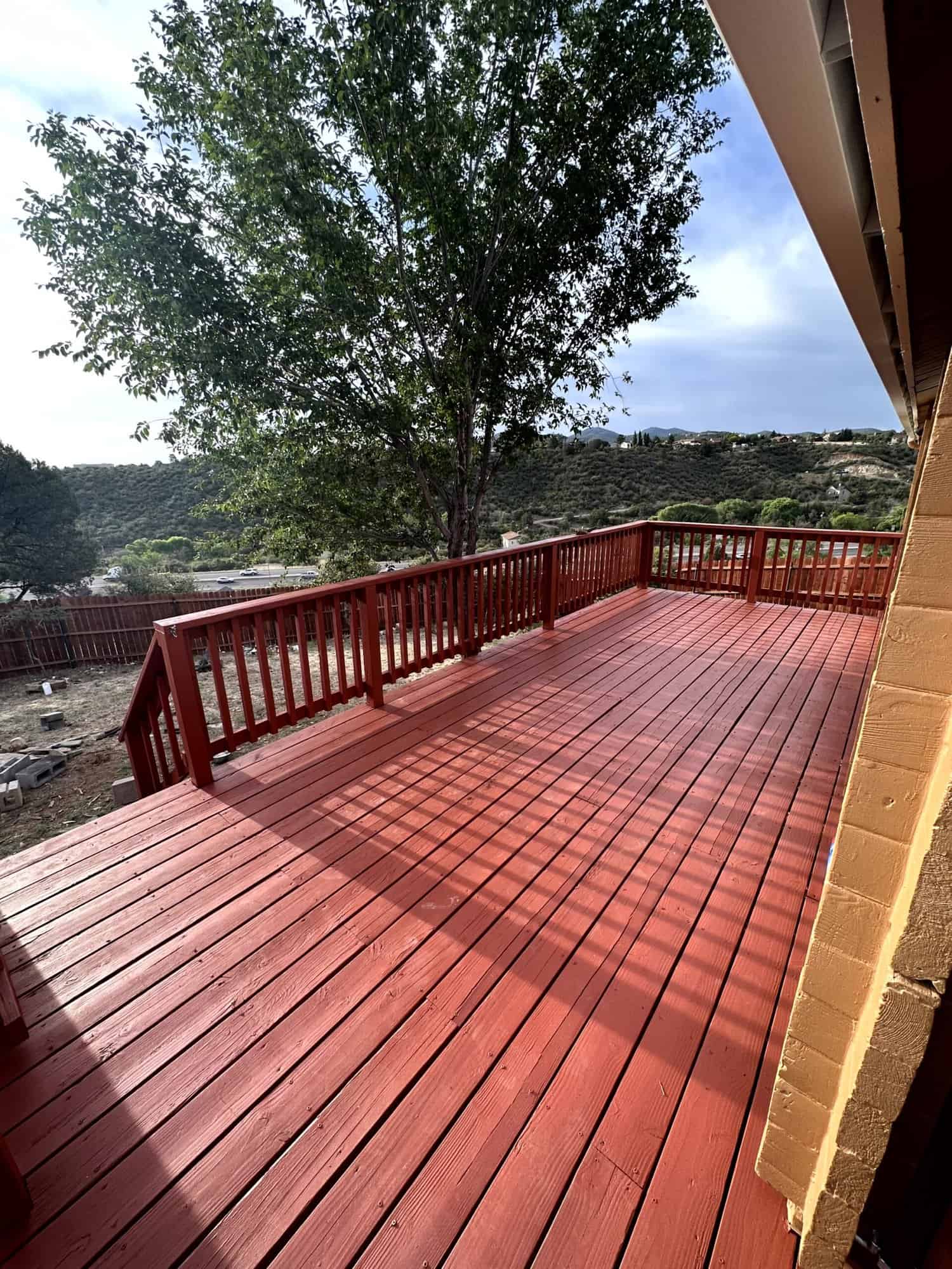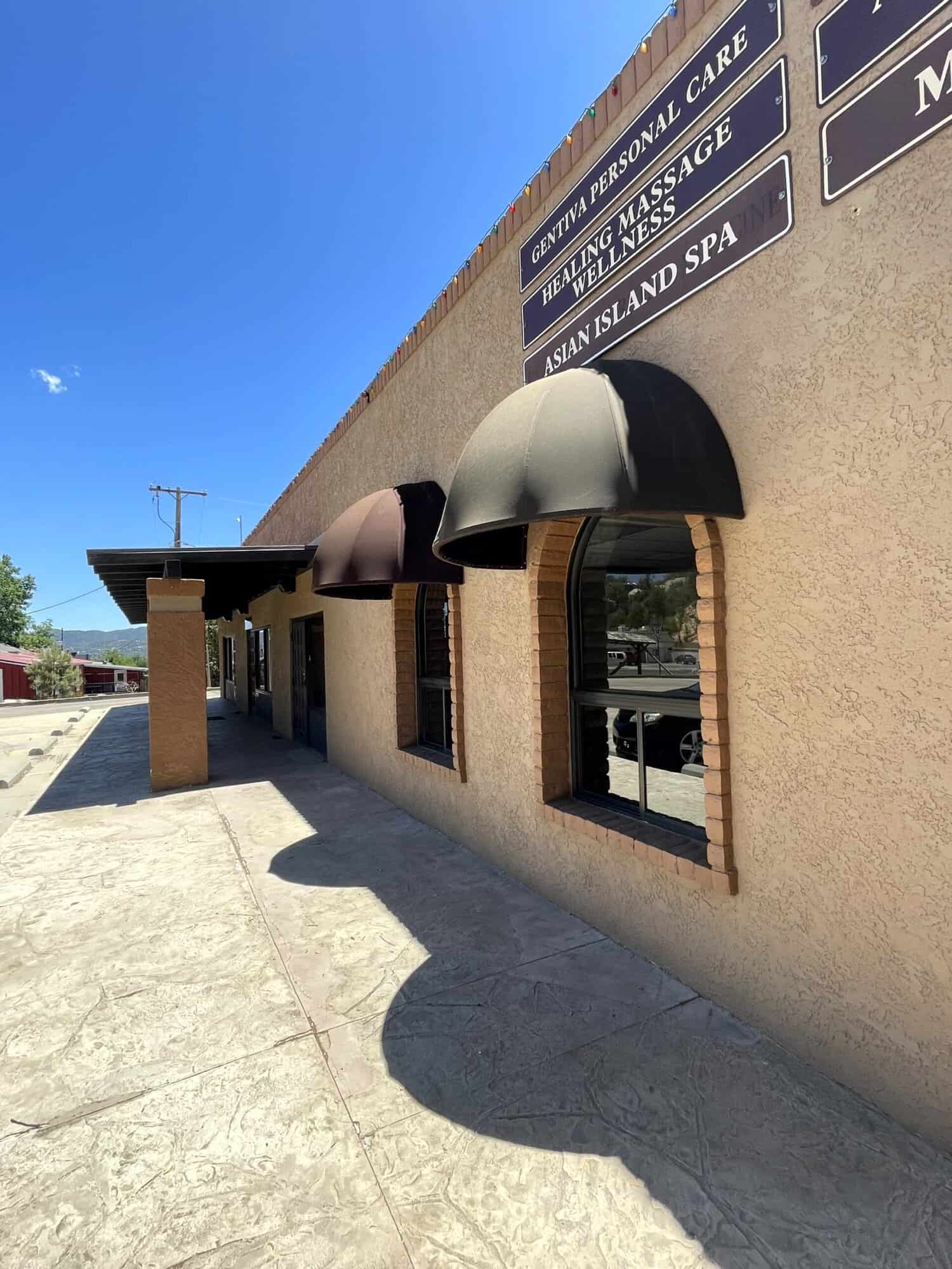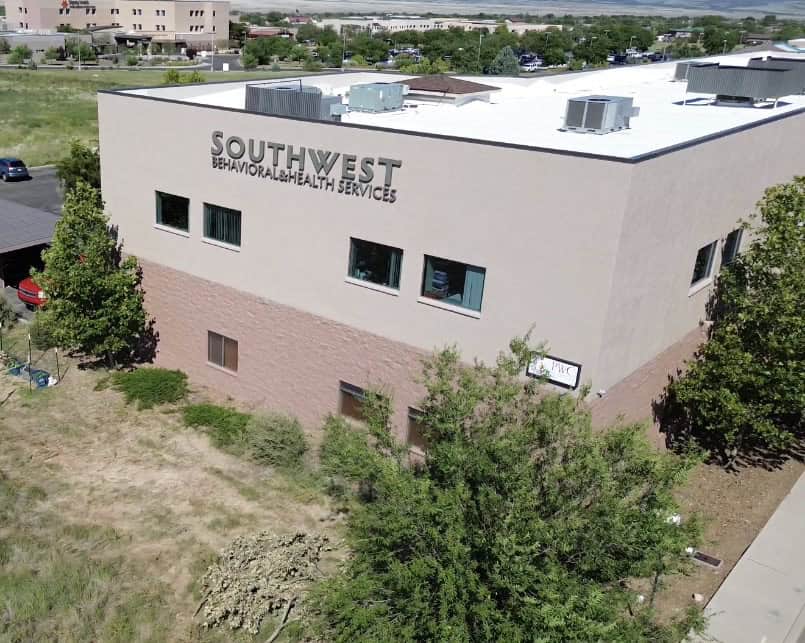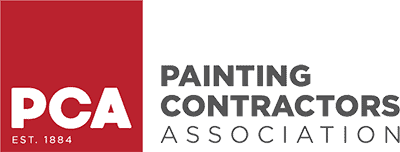A new paint job fails quickly when applied over rot, cracks, or moisture damage.
Skipping exterior repairs before painting leads to poor adhesion, voided warranties, and expensive rework. Paint doesn’t bond to soft wood, cracked stucco, or mold-contaminated surfaces. It lifts, bubbles, or peels—often in less than a year.
This guide outlines how to assess your exterior for hidden damage, identify repair needs, and avoid coating failure. Whether you’re managing a commercial building, HOA property, or a private residence, these inspection methods and product recommendations are essential to ensure long-lasting performance from your exterior painting project.
Why Repairs Matter Before Painting
Paint Doesn’t Bond to Damaged Substrates
Paint is not a structural solution. If wood is rotting, stucco is flaking, or caulk has failed, paint cannot form a stable bond. These compromised surfaces flex, shift, or degrade underneath, causing delamination. Even top-tier coatings—elastomerics, acrylics, or alkyds—fail early on poor substrates.
Paint Over Damage = Higher Costs Later
Repairs after painting require sanding or removing finished surfaces, replacing caulk or trim, and repainting entire wall sections. This doubles labor time, increases material costs, and introduces patchwork inconsistencies. On large properties, reactive repairs after painting can cost 40–70% more than proactive repair-included estimates.
Paint Warranties Exclude Substrate Failures
Manufacturers like Sherwin-Williams and Benjamin Moore specify that paint must be applied to sound, clean, dry surfaces. If peeling results from rot, water intrusion, or unsealed joints, those are classified as substrate failures—voiding any material or labor warranty.
Exterior Problems That Must Be Repaired Before Painting
Wood Rot
Inspection Areas: Window sills, fascia boards, soffits, trim, columns, bottom corners of siding
Detection Method: Probe with a screwdriver or awl—if the tool sinks or wood flakes, it’s compromised.
Causes: Prolonged moisture exposure, clogged gutters, poor flashing
Repair Options:
-
Full replacement of boards with treated lumber or PVC.
-
Spot restoration using epoxy systems like Abatron LiquidWood + WoodEpox, which rehardens and rebuilds decayed sections.
Stucco Cracking or Separation
Common Symptoms:
-
Hairline cracks (thermal movement)
-
Vertical or stair-step cracks (settlement)
-
Bulging or flaking patches (moisture intrusion)
Repair Strategy:
-
Hairline cracks: Apply Loxon XP Crack Filler or similar elastomeric patch.
-
Wider cracks: Open with grinder, embed fiberglass mesh, and skim with high-bond stucco patch mix.
-
Ensure full cure before priming—stucco with high moisture or alkalinity will resist coating adhesion.
Rusted Metal Fixtures
High-Risk Zones: Railings, lintels, flashing, gutters, fence posts
Problem: Rust expands, compromising adhesion and causing paint to flake prematurely.
Restoration Steps:
-
Mechanically remove rust to bare metal (wire brush or grinder).
-
Apply Rust-Oleum Rust Reformer or similar converter to stabilize surface.
-
Prime with a DTM primer followed by two coats of DTM acrylic or urethane finish.
Failed Sealants and Caulking
Common Failures:
-
Shrinkage, cracking, or separation at window perimeters, trim joints, and expansion joints.
-
Water infiltration at failed seals causes rot and mildew.
Corrective Action:
-
Remove old caulk completely—partial re-caulking causes weak bonds.
-
Replace with high-performance paintable caulk, such as:
-
DAP Dynaflex 230 (general-purpose, 50-year life)
-
OSI Quad Max (extreme flexibility, high UV resistance)
-
Mold and Mildew Contamination
Indicators:
-
Black, green, or gray patches on siding or soffits
-
Musty smell or visible spore clusters under eaves
Treatment Protocol:
-
Apply Jomax House Cleaner, Wet & Forget, or Concrobium Mold Control to kill spores.
-
Allow surface to dry fully.
-
Prime with mildew-resistant primer before applying finish coat.
Water Damage and Moisture Intrusion
Diagnostic Signs:
-
Bubbling or blistering paint
-
Swollen or warped panels
-
Staining under windows or rooflines
-
Efflorescence (white powder on masonry)
Remediation Options:
-
Isolate source: Inspect flashing, sealant, roof runoff, or grading.
-
Replace damaged substrate: Siding, trim, sheathing.
-
Use moisture meters to verify dryness (<15%) before repainting.
-
Consider moisture-barrier primers or elastomeric coatings if persistent exposure is expected.
How to Perform a DIY Exterior Inspection
Required Tools
| Tool | Purpose |
|---|---|
| Screwdriver or awl | Probe wood for rot or softness |
| Binoculars | Inspect upper elevations from the ground |
| Moisture meter | Measure substrate moisture content |
| Camera or phone | Document damage for estimates and quotes |
| Ladder | Access rooflines, soffits, and higher trim |
Visual Checklist
-
Wood: Probe window trim, baseboards, fascia, and sills. Look for softness or surface bubbling.
-
Stucco: Check for cracks near corners, joints, or above doors/windows.
-
Caulking: Look at vertical and horizontal joints—cracks or shrinkage indicate failure.
-
Metal: Scan for orange rust streaks or flaking paint at seams or weld points.
-
Mildew: Examine shaded, north-facing walls and areas behind landscaping.
Documentation Strategy
-
Use labeled photos (e.g., “East wall, rot under sill”)
-
Estimate linear feet (wood trim, caulking) or square footage (stucco patches)
-
Include date and weather conditions at the time of inspection
When to Bring in a Professional
Large-Scale or Commercial Properties
Properties like apartment complexes, warehouses, or retail centers should always involve a contractor experienced in pre-paint inspections and repair-inclusive scopes. Look for firms that provide:
-
Itemized repair vs. paint estimates
-
Moisture mapping or thermal imaging
-
Warranty-backed substrate prep
Indicators of Structural or Envelope Issues
Call a building envelope specialist or structural engineer if:
-
Paint fails repeatedly in the same locations
-
Wall cavities feel damp or emit musty odor
-
Interior mold appears near exterior walls
-
Efflorescence forms on masonry despite painting
Contractors Who Handle Repairs + Paint
Full-service painting contractors (such as Sherwin-Williams Pro+ partners or certified maintenance firms) may offer:
-
Minor carpentry
-
Stucco remediation
-
Caulking and waterproofing
-
Certified mold treatment
Ask for line items separating:
-
Surface repair
-
Surface preparation
-
Painting and coatings
Product-Based Solutions for Specific Repair Needs
| Problem | Recommended Product | Application Details |
|---|---|---|
| Rotten Wood | Abatron LiquidWood + WoodEpox | Epoxy consolidation and fill for localized repair |
| Cracked Stucco | Loxon XP Crack Filler | Elastomeric compound; bridges hairline and flex cracks |
| Rusted Surfaces | Rust-Oleum Rust Reformer | Converts rust, then topcoat with DTM enamel |
| Sealant Failure | DAP Dynaflex 230 / OSI Quad Max | Flexible caulks, compatible with acrylic and elastomeric finishes |
| Mold/Mildew | Jomax, Concrobium, Wet & Forget | Surface biocides—rinse thoroughly before priming |
Testing for Adhesion and Substrate Health
Paint Adhesion (ASTM D3359 Tape Test)
-
Cut a small “X” in painted surface using a blade
-
Press duct tape over the cut
-
Remove sharply
Result: If paint lifts, the surface may have adhesion problems caused by moisture, contaminants, or degraded coatings.
Moisture Levels
Use a moisture meter such as Wagner MMD4E on wood or composite surfaces.
Acceptable range: 8%–15% moisture content
Above 17%: Delay painting; dry-out and investigate source of moisture.
Stucco pH Testing
Fresh stucco should not be painted until its pH drops below 10.
-
Use stucco pH test strips or swab kits
-
Neutralize with pH-stabilizing primers if required
Key Questions to Ask Your Contractor
-
Do you inspect for rot, cracks, or sealant failure before quoting?
-
Are small repairs included or billed separately?
-
What epoxy or filler systems do you use?
-
Do you use moisture or pH meters before painting?
-
Can I see past examples of repairs and final finishes?
Repair Costs and Timeframe Estimates
| Repair Type | Estimated Cost Range | Time Impact |
|---|---|---|
| Trim replacement (per ft) | $6 – $12 | 1–2 days |
| Stucco crack patching | $10 – $18 / sq. ft | 1–2 days |
| Re-caulking per window | $15 – $40 | ½–1 day |
| Mold/mildew removal | $150 – $400 / side | 1 day |
| Minor rot patch (epoxy) | $50 – $150 / location | 1 day |
Sample Exterior Repair + Painting Workflow
| Phase | Task | Estimated Duration |
|---|---|---|
| Day 1 | Walkthrough inspection + documentation | ½ – 1 day |
| Days 2–4 | Repairs: rot, stucco, caulking | 2–3 days |
| Day 5 | Cleaning, surface drying, priming | 1 day |
| Days 6–8 | Full paint application | 2–3 days |
Conclusion
Painting over hidden damage is a short-term fix with long-term costs. Proper exterior repairs before painting prevent adhesion failure, extend coating life, and protect underlying structures from water intrusion and decay.
Assess your surfaces carefully. Use tools, tests, and contractor expertise to uncover issues that paint can’t solve. Whether you’re repainting a commercial building, multifamily property, or single-family home, sound prep ensures your finish coat performs as intended.

